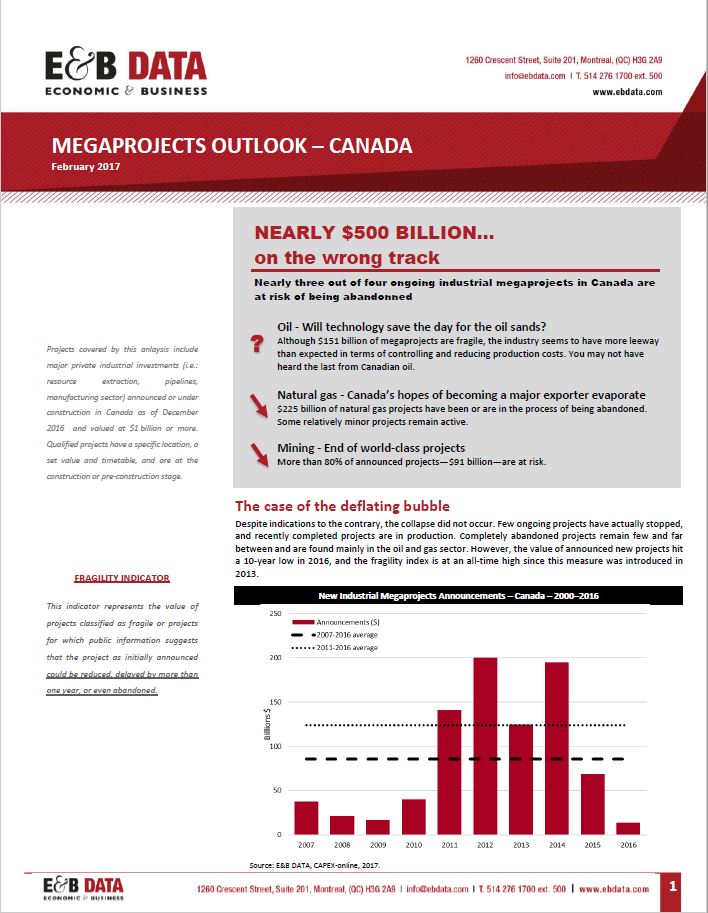Towards a Change in the Make-up of Foreign Investment in Canada?Fewer Traders, More Investors, Please! A look at foreign investment flows in Canada suggests an increasing lack of foreign investment in non-portfolio investment1, and as illustrated below, increasingly negative net flows of foreign direct investment (acquisitions and capital expenditures). Net Foreign Investment Flows in Canada – Statistics Canada2. Note: First two quarters of 2017.
Reading : Portfolio investment flows in Canada indicate that foreign investors have accumulated more assets in Canada since 2013 than Canadian investors have accumulated abroad. Moreover, Canadian investors were more active in foreign direct investment abroad than foreign investors in Canada, which reduces GDP growth. In fact, foreign direct investment in Canada decreased by nearly half between 2013 and 20163. In terms of capital expenditures, the value of new foreign investment in industrial megaprojects has collapsed to less than 10% of the 2012 peak4. Although commodity prices are rising slightly and the world economy seems to be somewhat revived, international economic fundamentals remain worrying (e.g. public and private debt, peaking globalization), and large-scale industrial investment in Canada is unlikely to rebound, at least in the short term. What could bring foreign investors back to Canada? Infrastructure as a Foreign Investment Alternative Large institutional investors (typically pension funds and sovereign wealth funds) are increasingly active in financing major infrastructure projects outside their own borders, particularly in the transport and energy sectors, and Canadian institutional investors are no exception5. For instance:
Is there a reverse movement? Foreign institutional investors still appear to have a limited presence in Canadian infrastructure projects, although some are showing interest. Examples include recent investments in British Columbia’s port infrastructure6 by state-owned corporations from Persian Gulf countries. These institutional investors are looking for long-term investment opportunities, since they contribute to the financial structure and are often more comfortable with moderate but stable returns over the long term. In today’s world, as our standard points of reference vanish and equilibrium between nations is challenged, a certain amount of mutualisation of long-term investments between countries could bring a little stability and predictability—rare commodities these days. ******
[1] See National Bank of Canada. Hot Charts. Vol. XVIII, No 95. August 30, 2017. « The resulting dependency on foreign capital inflows is not necessarily a bad thing if the current account deficit is being financed by inflows that are long-term, stable and help raise an economy’s potential growth, e.g. fixed direct investment. But unfortunately for Canada, the main source of financing is short term capital ».↑
|



